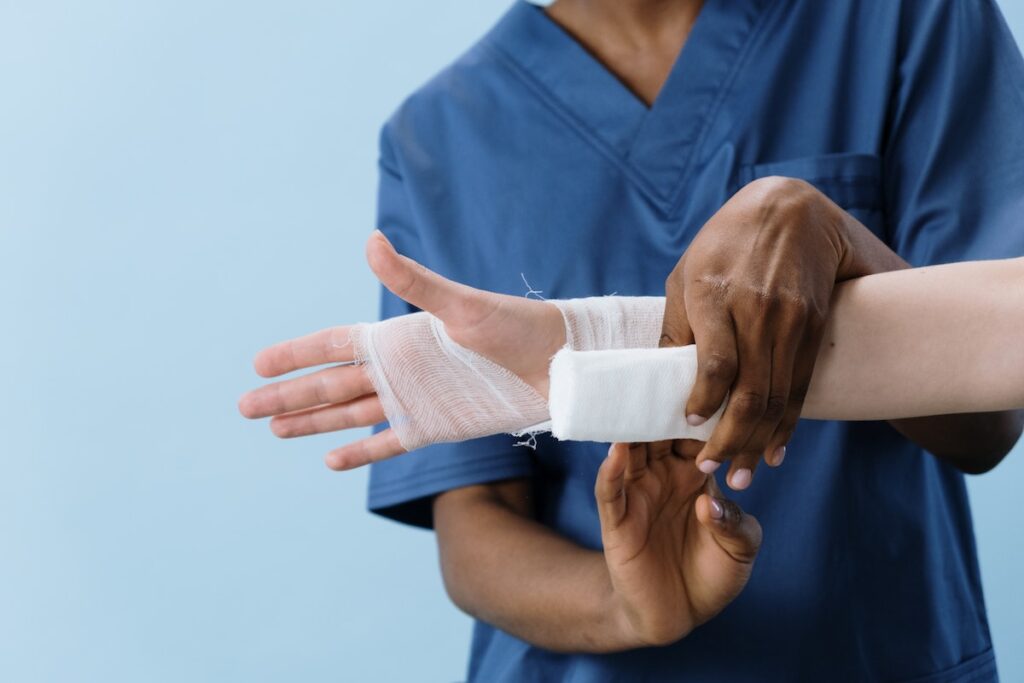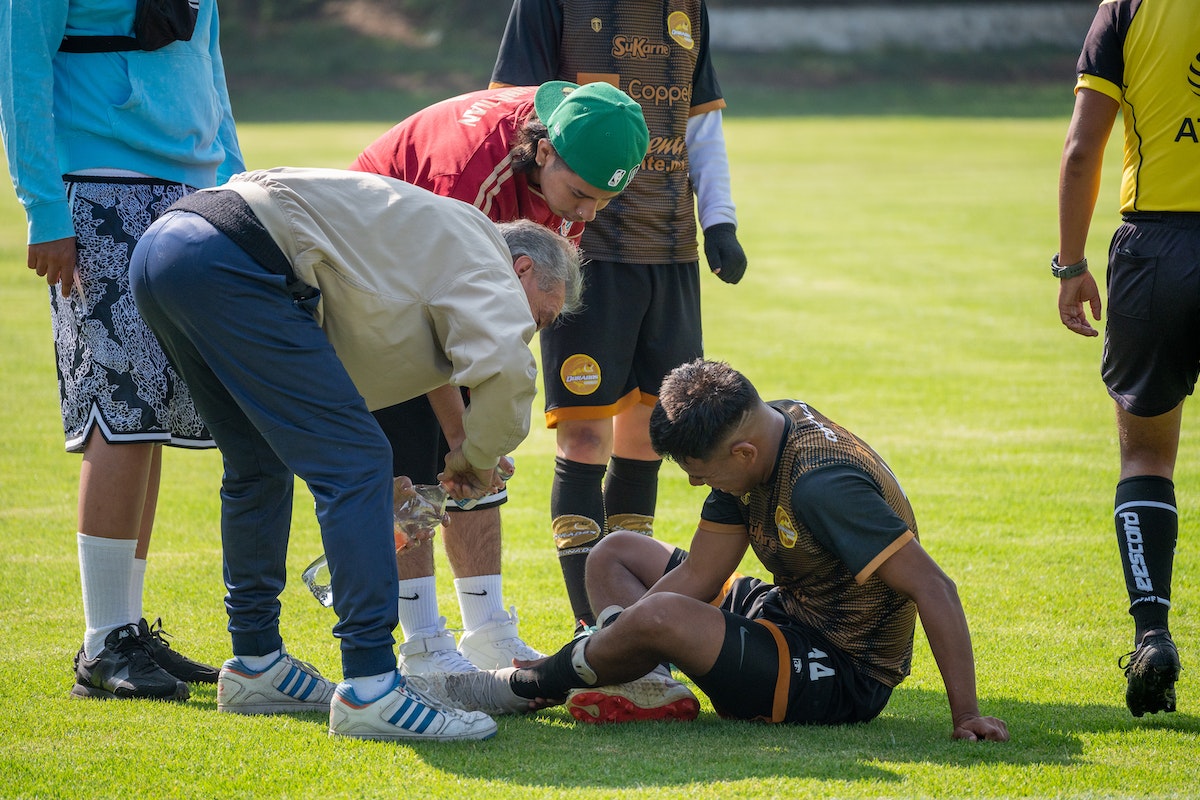Introduction
Many people suffer from common orthopedic injuries, from young athletes to older adults. Knowing how to prevent these injuries can make a big difference in staying healthy and active.
General injuries like ankle sprains, sports injuries, and stress fractures are particularly prevalent. These injuries can result from various activities, whether playing a sport, walking, or even doing daily chores. Being aware of the most common injuries and their causes can help individuals take preventive measures and reduce their risk of getting hurt.
Types of Orthopedic Injuries
Orthopedic injuries vary widely, affecting different parts of our musculoskeletal system, from bones to ligaments. Ligaments, the tough bands connecting our bones, can be particularly susceptible to injuries. Some common ligament-related issues include anterior cruciate ligament reconstruction and ACL injuries. These injuries often occur due to sudden twists, overextensions, or direct impacts. Recognizing and treating them promptly is vital to ensure joint stability and function.
Fractures
A fracture signifies a break in a bone, ranging from a hairline crack to a complete split. Such breaks result from various incidents like falls, accidents, and while engaging in sports. Especially in contact sports or high-impact activities, bones can be subjected to forces beyond their bearing capacity, leading to fractures. While any fracture is a serious injury that requires medical attention, the severity and treatment can vary based on the type and location of the fracture. Adopting preventive measures like wearing protective gear during sports or taking caution in daily activities can significantly reduce the risk of sustaining such injuries.
Sprains and Strains

Sprains and strains frequently surface in sports and physical activity, with athletes often bearing the brunt of these injuries. While they may sound similar, they affect different parts of our musculoskeletal system. A sprain, such as an ankle sprain, occurs when a ligament—the tough band connecting bones—is overstretched, sometimes to the point of tearing. This is commonly seen in activities that involve sudden twists or missteps. On the other hand, a strain pertains to injuries to the muscles or tendons. Tendons, which anchor muscles to bones, can get overstretched or torn during abrupt movements, heavy lifting, or prolonged repetitive actions. Both conditions can be excruciating and, if not treated promptly, may lead to longer recovery periods or further complications.
Dislocations
Dislocations happen when a bone slips out of its joint. This is very painful and can lead to severe pain, often accompanied by swelling and immobility. The sensation might be comparable to intense joint pain, making even the slightest movement unbearable. Common areas for dislocations are the shoulder, finger, and elbow. When dislocated, these joints not only exhibit signs of discomfort but can also show visible deformities. It’s crucial to seek medical attention immediately to realign the bones and ensure no further damage is caused to surrounding tissues.
Tendon and Ligament Injuries
Tendons and ligaments play crucial roles in connecting our muscles to bones and bones to each other, respectively. They can get hurt with overuse, sudden movements, or when muscle fatigue sets in, compromising the usual support. A torn ACL (a knee ligament) is one common orthopedic injury that athletes often face. Muscle fatigue can strain these structures, making them more susceptible to injuries. Recognizing early signs of wear and tear and ensuring proper rest can help prevent such injuries.
Overuse Injuries
Overuse injuries are ailments that arise when a particular part of the body is subjected to excessive strain without adequate rest. Repeating the same motion, especially in sports or work-related activities, can cause such injuries. Common examples include tennis elbow, caused by repetitive racket swinging, and pitcher’s shoulder, seen in baseball players who throw frequently. These conditions might start as minor discomforts but can escalate if the repetitive actions continue without intervention. The best ways to manage and prevent overuse injuries include recognizing early signs of discomfort, incorporating rest periods into routines, cross-training to vary the type of stress placed on specific body parts, and seeking advice on proper techniques and equipment. Always remember: pushing through the pain isn’t a sign of strength; listening to your body and taking proactive measures is.
Prevention of Orthopedic Injuries
To prevent common exercise injuries, it’s vital to warm up before and cool down after exercising. Regular breaks and varying exercises can help too. Remember, wearing the right gear, like helmets and padding, is also crucial.
Additionally, proper form during exercises can significantly reduce the risk of strains and sprains. When done correctly, strength training boosts muscle power and fortifies ligaments and tendons, making them less susceptible to injury. Furthermore, understanding the injury mechanism – the specific way an injury occurs – can provide insights into the best prevention strategies. Knowledge is power, and knowing how injuries happen can be your first step to avoiding them.
Rehabilitation and Recovery

Do injuries make you stronger? It sounds strange, but the affected area can become more resilient after healing after experiencing a sports injury or stress fracture. However, proper rehabilitation is essential. This means doing exercises, stretches, and sometimes, getting professional help. At Be Ready PT we offer a wide range of orthopedic physical therapy services to help you through your recovery process and ensure a safe return to day-to-day activities or sports.
But how can previous injuries increase the risk of injury? A significant risk factor is that once hurt, the body might move differently to avoid pain. This can strain other parts and cause new injuries. It’s why rehabilitation and correct movement are so essential. Being aware of these risk factors can guide individuals on the right path to recovery and prevent further injuries.
The Finish Line: Wrapping Up Our Injury Chat
Staying active and engaging in physical activities undeniably benefits overall health and well-being. However, the risk of injuries, including a lower extremity injury, is a reality for many enthusiasts and athletes. Understanding common orthopedic injuries and their prevention helps maintain an uninterrupted active lifestyle and ensures one’s safety and longevity in their chosen physical pursuits. If faced with an injury, it’s paramount not to downplay its severity. Seeking timely medical advice can make a world of difference in recovery. Institutions like Johns Hopkins Medicine provide in-depth information and services for injuries prevention and rehabilitation.
If you need expert care, preventative guidance, or physical therapy in Nashville, consider reaching out to BeReady Performance Therapy. We are dedicated to helping individuals and athletes bounce back and continue their active pursuits.
Stay active, stay safe, and always prioritize your health.


